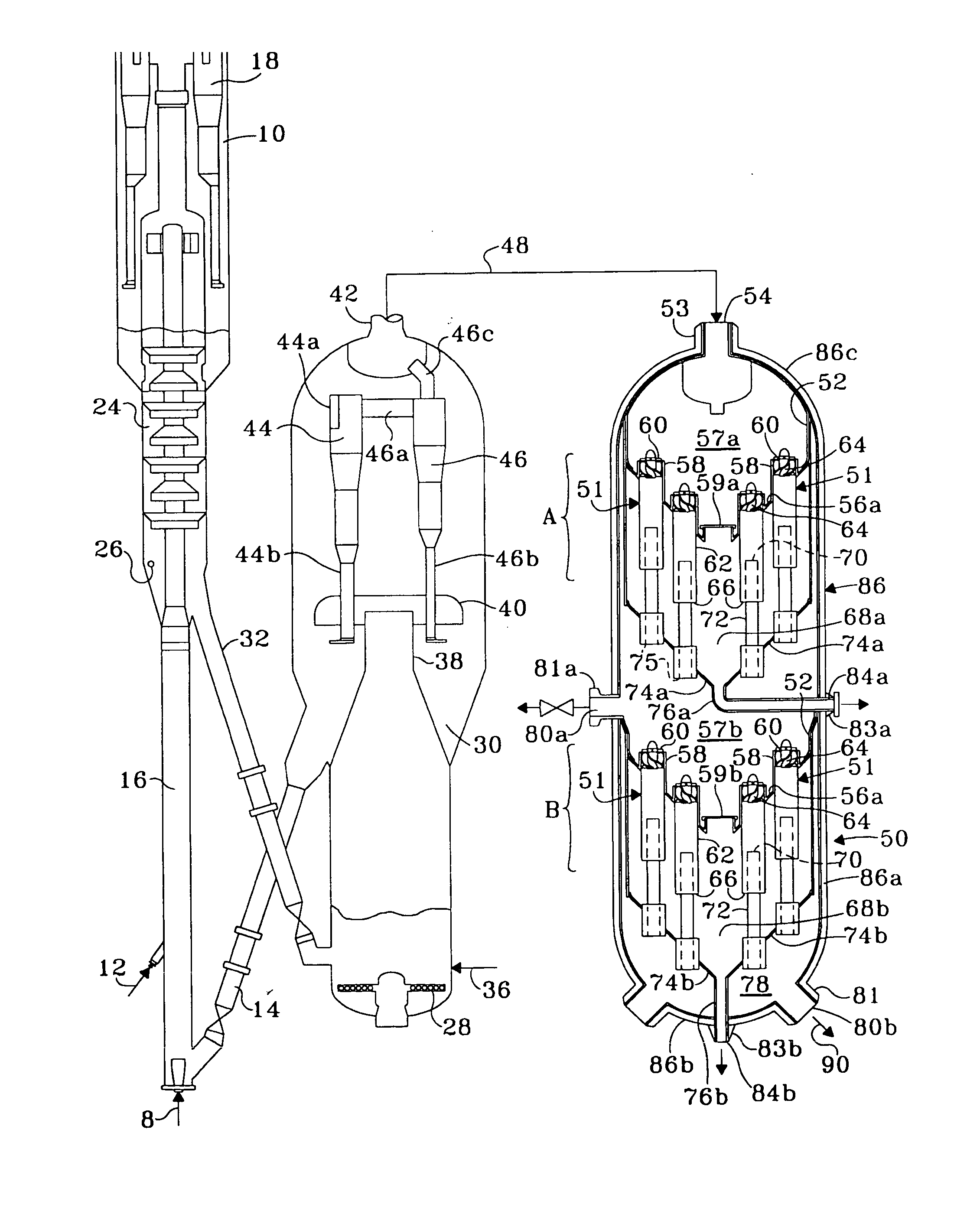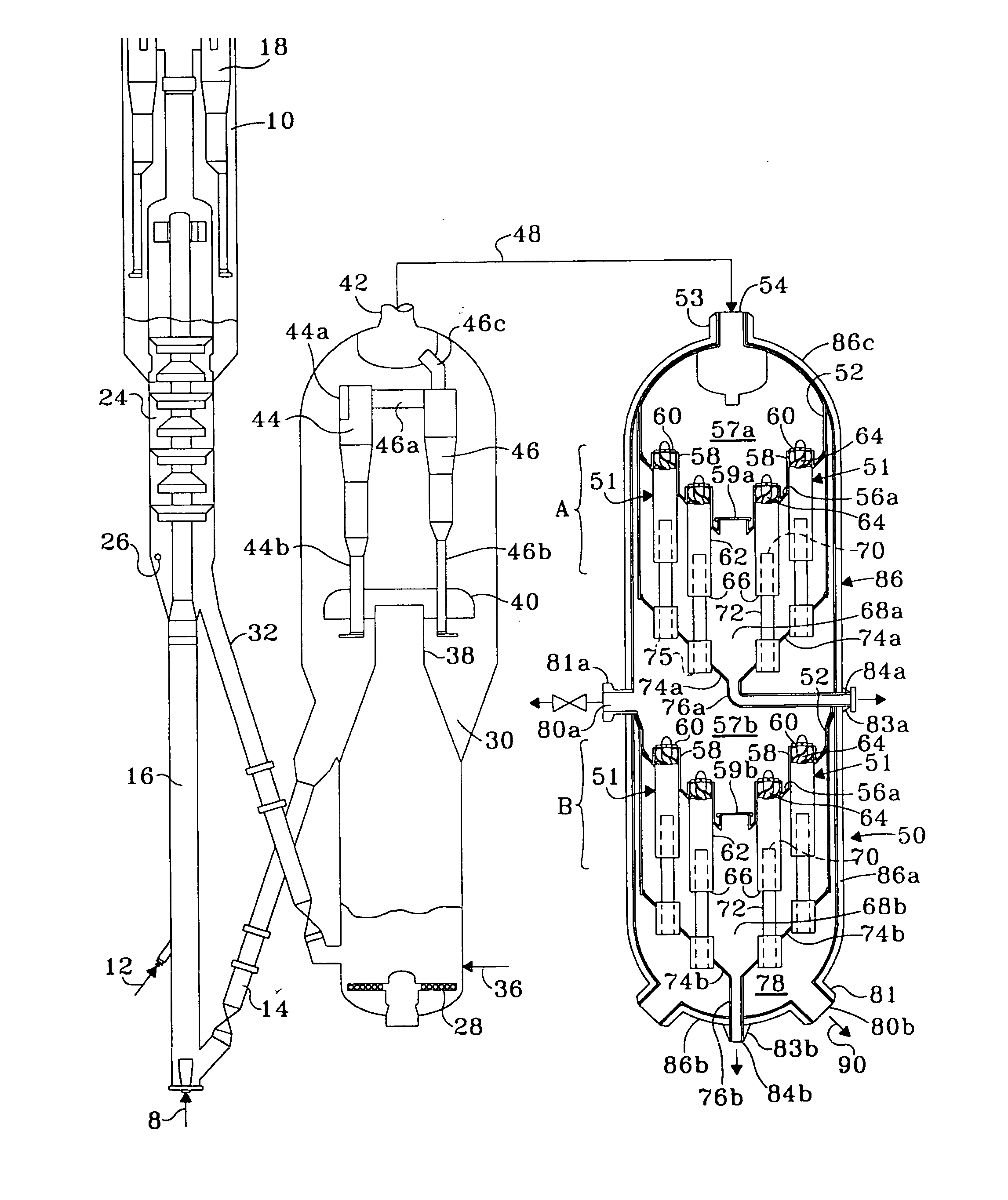Multiple stage separator vessel
- Summary
- Abstract
- Description
- Claims
- Application Information
AI Technical Summary
Benefits of technology
Problems solved by technology
Method used
Image
Examples
example
[0029] The projected performance of the MSS in an FCC application has been compared to the performance of a TSS. With a conventional single-stage TSS, wherein the inlet flow into the TSS was 68 lbs / hr of particulate, the single stage separator yielded a purified gas with an emission of 0.78 lb / 1000 lbs coke. Certain applications may require guaranteed emissions of less than 0.80 lb / 1000 lbs coke, in which case such a single-stage separator would not provide a desired design margin of performance. We projected, based on data from operating units, that if all of the purified gas from a conventional TSS with a single stage at a loading of 14 lbs / hr of particulate were introduced to a second stage as would occur in an MSS vessel of the present invention, it would yield an overall emission of 0.54 lb / 1000 lbs coke, a significant improvement in particulate removal and well within a design margin to satisfy, for example, a guaranteed emission of less than 0.80 lb / 1000 lb coke. This project...
PUM
| Property | Measurement | Unit |
|---|---|---|
| Volumetric flow rate | aaaaa | aaaaa |
Abstract
Description
Claims
Application Information
 Login to View More
Login to View More - Generate Ideas
- Intellectual Property
- Life Sciences
- Materials
- Tech Scout
- Unparalleled Data Quality
- Higher Quality Content
- 60% Fewer Hallucinations
Browse by: Latest US Patents, China's latest patents, Technical Efficacy Thesaurus, Application Domain, Technology Topic, Popular Technical Reports.
© 2025 PatSnap. All rights reserved.Legal|Privacy policy|Modern Slavery Act Transparency Statement|Sitemap|About US| Contact US: help@patsnap.com


